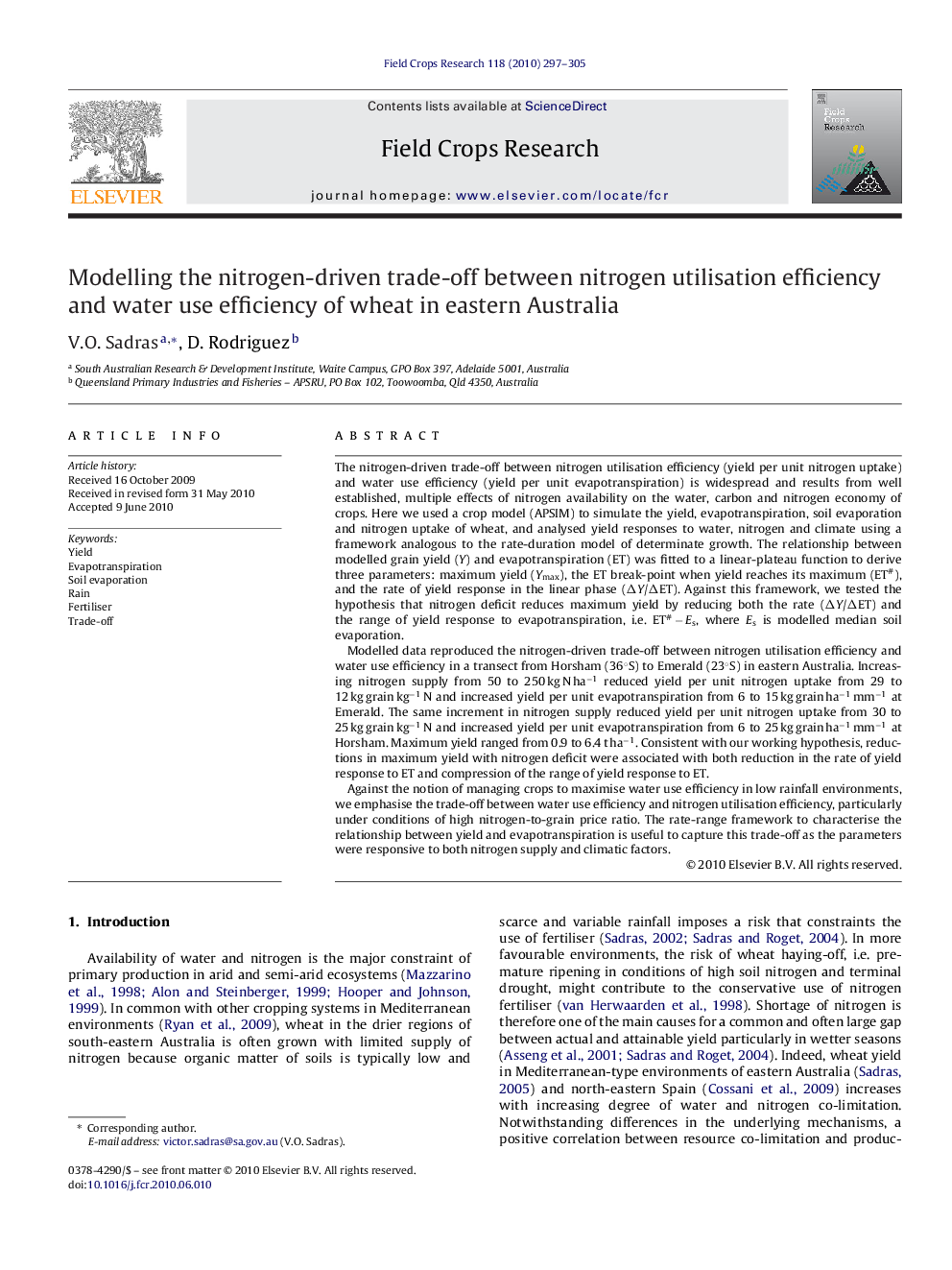| کد مقاله | کد نشریه | سال انتشار | مقاله انگلیسی | نسخه تمام متن |
|---|---|---|---|---|
| 4510950 | 1321883 | 2010 | 9 صفحه PDF | دانلود رایگان |

The nitrogen-driven trade-off between nitrogen utilisation efficiency (yield per unit nitrogen uptake) and water use efficiency (yield per unit evapotranspiration) is widespread and results from well established, multiple effects of nitrogen availability on the water, carbon and nitrogen economy of crops. Here we used a crop model (APSIM) to simulate the yield, evapotranspiration, soil evaporation and nitrogen uptake of wheat, and analysed yield responses to water, nitrogen and climate using a framework analogous to the rate-duration model of determinate growth. The relationship between modelled grain yield (Y) and evapotranspiration (ET) was fitted to a linear-plateau function to derive three parameters: maximum yield (Ymax), the ET break-point when yield reaches its maximum (ET#), and the rate of yield response in the linear phase (ΔY/ΔET). Against this framework, we tested the hypothesis that nitrogen deficit reduces maximum yield by reducing both the rate (ΔY/ΔET) and the range of yield response to evapotranspiration, i.e. ET# − Es, where Es is modelled median soil evaporation.Modelled data reproduced the nitrogen-driven trade-off between nitrogen utilisation efficiency and water use efficiency in a transect from Horsham (36°S) to Emerald (23°S) in eastern Australia. Increasing nitrogen supply from 50 to 250 kg N ha−1 reduced yield per unit nitrogen uptake from 29 to 12 kg grain kg−1 N and increased yield per unit evapotranspiration from 6 to 15 kg grain ha−1 mm−1 at Emerald. The same increment in nitrogen supply reduced yield per unit nitrogen uptake from 30 to 25 kg grain kg−1 N and increased yield per unit evapotranspiration from 6 to 25 kg grain ha−1 mm−1 at Horsham. Maximum yield ranged from 0.9 to 6.4 t ha−1. Consistent with our working hypothesis, reductions in maximum yield with nitrogen deficit were associated with both reduction in the rate of yield response to ET and compression of the range of yield response to ET.Against the notion of managing crops to maximise water use efficiency in low rainfall environments, we emphasise the trade-off between water use efficiency and nitrogen utilisation efficiency, particularly under conditions of high nitrogen-to-grain price ratio. The rate-range framework to characterise the relationship between yield and evapotranspiration is useful to capture this trade-off as the parameters were responsive to both nitrogen supply and climatic factors.
Journal: Field Crops Research - Volume 118, Issue 3, 10 September 2010, Pages 297–305